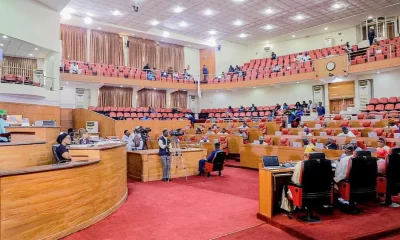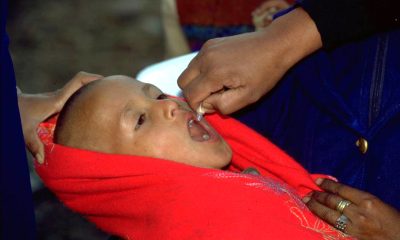The COVID-19 pandemic will for centuries leave a history of traumatic experiences in several aspects of human lives across the world. The consequences of the lockdowns are being unveiled by scientists.
Synthesis of reports from the first wave of the COVID-19 pandemic, studies of short-term school closures as part of social lockdown measures reported adverse mental health symptoms and health behaviors among children and adolescents. Links were established between school closure and health outcomes and behaviors could not be separated from broader lockdown measures. Invariably, the lockdowns brought health dangers to the world population.
The Journal of the American Medical Association Pediatrics in a review of evidence of 36 studies from 11 different countries evaluating school closure as part of broader social lockdown during the first CVD-19 wave, disclosed that school closings during the pandemic have negative impacts on the health and well-being of children and adolescents.
The studies focused on mental health, other health behaviors, and well-being in children and adolescents aged 0 to 19 years during the first few months of the initial lockdown in many countries of the world.
It was highlighted that researchers in their review discovered that: 69% of the studies concerning mental health identified associations across emotional, behavioral, and restlessness/inattention problems.
18% to 60% of children and adolescents scored above risk thresholds for distress, particularly, anxiety and depressive symptoms.
Studies showing higher screen time usage, greater social media use, and lower physical activity.
The report suggested that school closures as part of social lockdown measures contributed to adverse mental health symptoms and health behaviors among children and adolescents.
Unfortunately, governments across the world never considered the adverse effects of the closures and lockdown of the social space and public institutions. Governments also failed to take public health consequences into account, especially when they could be affecting children’s mental health and well-being in both the short and long-term.
The study, “School Closures During Social Lockdown and Mental Health, Health Behaviors, and Well-being Among Children and Adolescents During the First COVID-19 Wave: A Systematic Review,” researched on the hypothesis that school closures as a broader social lockdown measure during the COVID-19 pandemic may be associated with the health and well-being of children and adolescents.
The study reviewed reports on the association of school closures during broader social lockdown with mental health, health behaviors, and well-being in children and adolescents aged 0 to 19 years, excluding associations with transmission of infection.
In the study, 11 databases were searched from inception to September 2020, and machine learning was applied for screening articles. A total of 16,817 records were screened, 151 were reviewed in full text, and 36 studies were included. Quality assessment was tailored to study type. A narrative synthesis of results was undertaken because data did not allow meta-analysis.
Findings show that a total of 36 studies from 11 countries were identified, involving a total of 79 781 children and adolescents and 18 028 parents, which occurred during the first wave of the COVID-19 pandemic (February to July 2020). All evaluated school closure as part of broader social lockdown during the first COVID-19 wave, and the duration of school closure ranged from 1 week to 3 months. Of those, 9 (25%) were longitudinal pre-post studies, 5 (14%) were cohort, 21 (58%) were cross-sectional, and 1 (3%) was a modeling study. Thirteen studies (36%) were high quality, 17 (47%) were medium quality, and 6 (17%) were low quality. Twenty-three studies (64%) were published, 8 (22%) were online reports, and 5 (14%) were preprints. Twenty-five studies (69%) concerning mental health identified associations across emotional, behavioral, and restlessness/inattention problems; 18% to 60% of children and adolescents scored above risk thresholds for distress, particularly anxiety and depressive symptoms, and 2 studies reported no significant association with suicide. Three studies reported that child protection referrals were lower than expected number of referrals originating in schools. Three studies suggested higher screen time usage, 2 studies reported greater social media use, and 6 studies reported lower physical activity. Studies on sleep (10 studies) and diet (5 studies) provided inconclusive evidence on harms.

 News1 week ago
News1 week ago
 Business6 days ago
Business6 days ago
 Football1 week ago
Football1 week ago
 Health5 days ago
Health5 days ago
 Business1 week ago
Business1 week ago
 Education1 week ago
Education1 week ago
 Latest5 days ago
Latest5 days ago
 Latest7 days ago
Latest7 days ago

